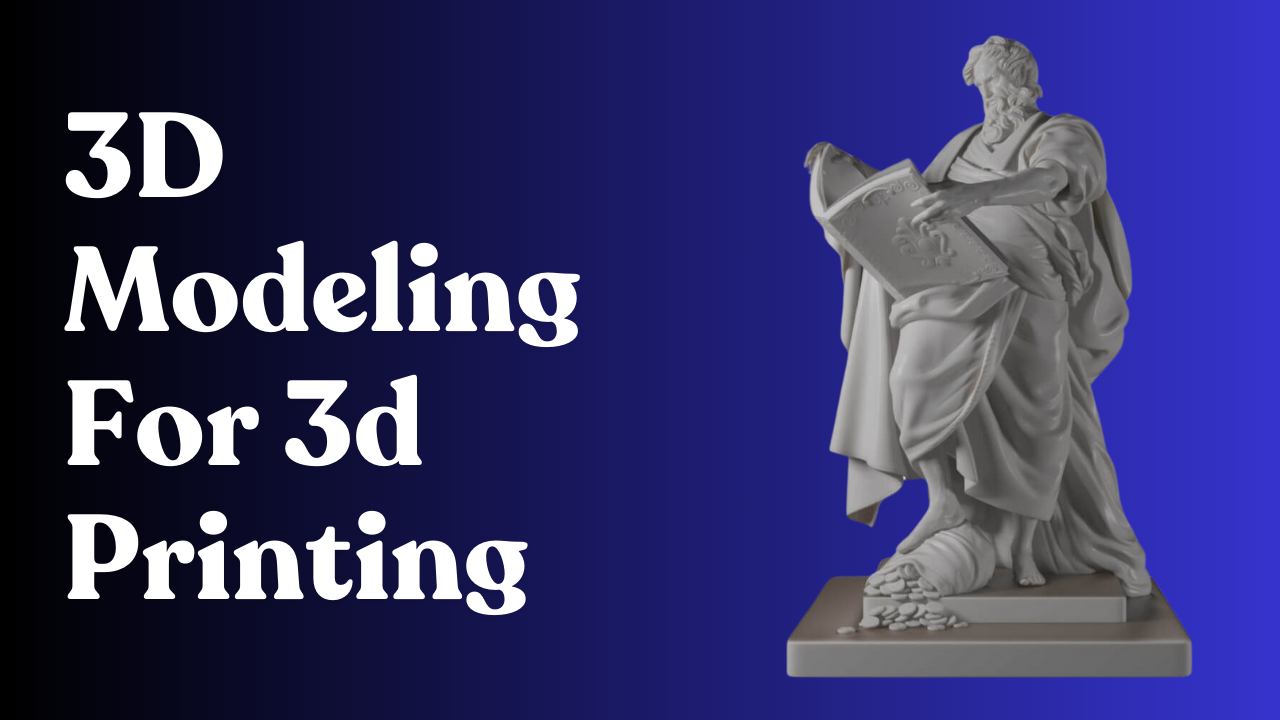3D Modeling for 3D Printing: An Exciting Beginner’s Guide
3D printing is an exciting hobby and technology that lets you turn digital designs into real objects. But before a 3D printer can create anything, you need a 3D model. This is where 3D modeling comes in! If you’re new to 3D modeling for 3D printing, don’t worry—we’ll break it down in a simple and fun way.
What is 3D Modeling?
3D modeling is the process of creating a digital, three-dimensional representation of an object using specialized software. These digital models can then be sent to a 3D printer to be turned into physical objects layer by layer.
Why is 3D Modeling Important for 3D Printing?
Not all digital models are suitable for 3D printing. A good 3D model should:
- Have a solid structure (no holes or gaps in the design).
- Be optimized for the printing process (not too thin or too thick).
- Be in the correct file format (.STL or .OBJ files are the most common for 3D printing).
- Consider the printing material and method.
READ MORE: Cool 3D Prints
Popular 3D Modeling Software for 3D Printing
There are many 3D modeling tools available, ranging from beginner-friendly to professional-level software. Here are some of the best ones:
- Tinkercad (Best for Beginners)
- Free, web-based, and easy to use.
- Drag-and-drop interface with simple shapes.
- Great for learning the basics of 3D modeling.
- Fusion 360 (Best for Engineering and Precision)
- Powerful and used by professionals.
- Offers free versions for personal use.
- Great for mechanical parts and functional designs.
- Blender (Best for Artistic Models)
- Free and open-source.
- Great for sculpting, animation, and detailed designs.
- Has a learning curve but offers advanced tools.
- SketchUp (Best for Architectural Models)
- Easy to learn and great for designing structures.
- Useful for home projects and furniture modeling.
- ZBrush (Best for Detailed Sculpting)
- Used by artists for making highly detailed models.
- Perfect for creating figurines, statues, and organic shapes.
How to Create a 3D Model for Printing
If you want to create your own 3D model for printing, follow these simple steps:
Step 1: Start with a Simple Shape
Most models start with basic shapes like cubes, spheres, or cylinders. You can combine and adjust them to form more complex objects.
Step 2: Make Sure Your Model is Solid
A 3D model must be “watertight,” meaning it has no holes or open edges. If the model has gaps, the 3D printer might not understand how to print it correctly.
Step 3: Adjust the Size and Thickness
Make sure your model is the right size for your 3D printer. Also, avoid making parts too thin, as they may break during printing.
Step 4: Add Details and Refinements
Use tools like smoothing, sculpting, and texturing to add more details to your model. However, keep in mind that too much detail might be hard for some 3D printers to reproduce.
Step 5: Export to the Correct File Format
Once your model is complete, export it as an .STL or .OBJ file, which are the standard formats for 3D printing.
Common Mistakes to Avoid in 3D Modeling for Printing
- Too Thin Walls – If a model has thin parts, it may not print correctly or might be too fragile.
- Non-Manifold Geometry – If there are holes or floating edges in your model, the printer won’t know what to do with them.
- Ignoring Print Orientation – Some models need support structures depending on how they are positioned in the printer.
- Overcomplicated Designs – High-detail designs can slow down printing and may not come out as expected.
Useful Tools for Fixing 3D Models
If your model has errors, don’t worry! There are free tools to help you fix them before printing:
- Meshmixer – Great for repairing and modifying STL files.
- Netfabb – Used for fixing errors in 3D models.
- Cura or PrusaSlicer – These slicing software programs check your model and prepare it for printing.
Where to Find 3D Models if You Don’t Want to Design from Scratch
Not ready to make your own models? You can download ready-made designs from websites like:
- Thingiverse (Free, community-driven models)
- MyMiniFactory (Quality-tested models)
- Cults3D (Paid and free models)
- CGTrader (High-quality 3D designs for various uses)
Final Thoughts: Start Your 3D Modeling Journey!
3D modeling for 3D printing is a fun and rewarding skill that lets you create custom objects. Whether you’re making a simple keychain or an intricate sculpture, understanding how to design models for 3D printing will open up endless possibilities.
Start with beginner-friendly software like Tinkercad, learn the basics, and experiment with your own designs. Soon, you’ll be printing amazing things straight from your imagination. Happy modeling and printing!

